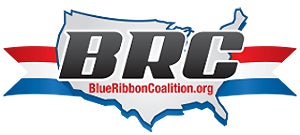BlueRibbon Coalition Western Representative Don Amador attended the Forest Service Planning Rule FACA Committee Meeting in Sacramento, California. Here are his thoughts.
 SACRAMENTO, CA (March 10, 2014) — On behalf of the BlueRibbon Coalition (BRC), I recently attended the Forest Service Planning Rule FACA Committee Meeting in Sacramento, California. This 21 member committee comprised of stakeholder representatives from timber, local government, environmental groups, tribes, and recreation organizations has met 7 times in the last two years.
SACRAMENTO, CA (March 10, 2014) — On behalf of the BlueRibbon Coalition (BRC), I recently attended the Forest Service Planning Rule FACA Committee Meeting in Sacramento, California. This 21 member committee comprised of stakeholder representatives from timber, local government, environmental groups, tribes, and recreation organizations has met 7 times in the last two years.
According to the agency, the group reviewed the proposed planning rule directives with the goal of offering recommendations that could enhance the clarity of the directives and ensure that the directives contribute to a planning framework that is transparent, inclusive, efficient and effective.
As a member of the public, I was impressed by the following discussion points: agency commitment to public involvement, recognition of developed recreation, and challenges.
The agency stated their motto is to “Learn Locally and Advise Nationally.” Based on the tone and direction of the committee’s discourse and line-officer testimony from early adopter Forests (Sierra, Inyo, and Sequoia NFs), it appears that theme has been embraced by the agency as a foundation of the forest plan revision process.
It was noted the agency had received a lot of input regarding developed recreation and travel management and that portion of the planning efforts should be enhanced. In addition, there seemed to be consensus that planning efforts should be on-the-ground product oriented instead of the “planning being the product.”
I believe the robust participation by national and regional OHV groups in the rule’s public comment period was responsible for the plan’s recognition of developed recreation (including OHV) as an important factor in the decision-making process.
There did appear to be some serious hurdles or challenges to future planning efforts on Forest Service lands due to loss of practical and institutional knowledge because of the ever growing number of retirements, endless litigation, unfilled staff positions, impacts to relationships because of the agency’s “move to promote” human resources’ plan, and conflicting regulations that prevent substantive fire/fuel treatments. I would be naïve to overlook the fact that good words and even good intentions have too often failed to penetrate the bureaucracy and reach the ground, particularly for the recreation enthusiast.
I came away from the meetings with a strong impression that users must remain engaged and occupy a seat at the table for the foreseeable future. Sitting on the sideline is not an option.
To review BRC’s role in the FS Planning Rule, visit http://www.sharetrails.org/public-lands/new-forest-planning-rule.
Don Amador writes on environmental and land-use issues from his office in Oakley, California.
 Your Privacy Choices
Your Privacy Choices